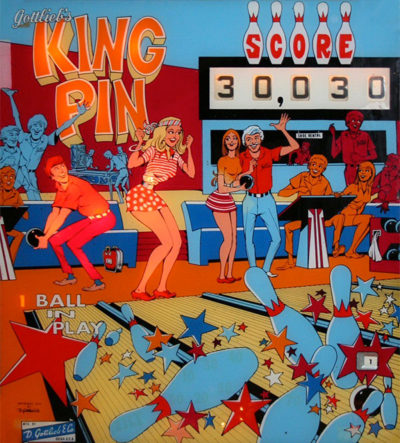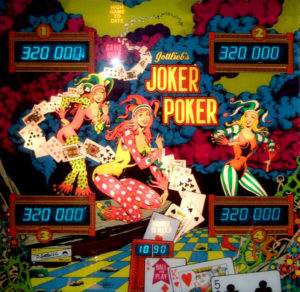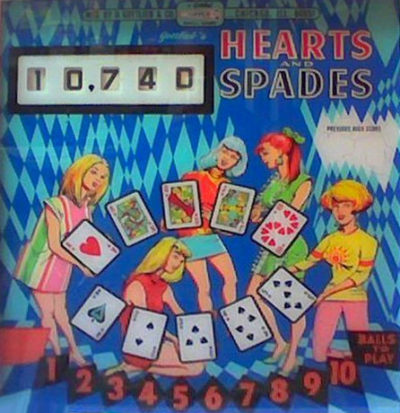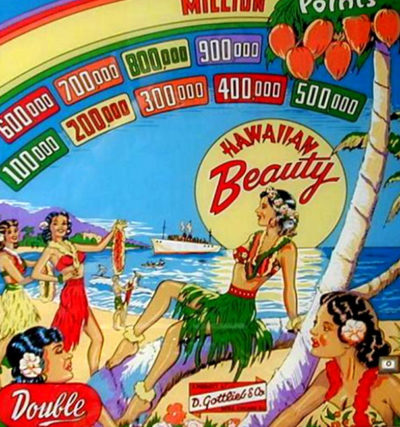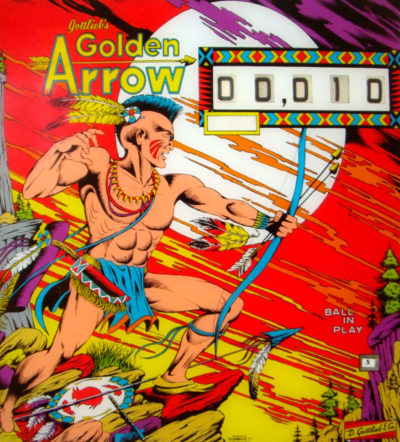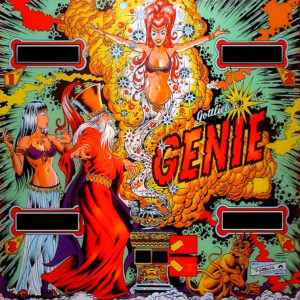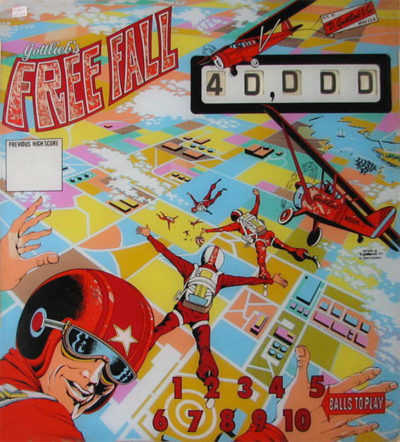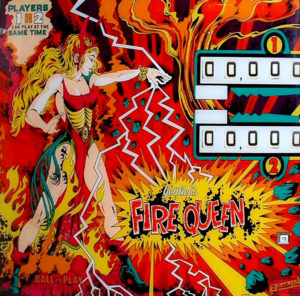Two banks of 5 drop targets, with two kickout holes above the drop targets. Three pop bumpers, no slingshots, and two 3″ flippers. The game play/rules behind Fastdraw is rather interesting, and a bit complicated for an EM pinball. First try and score the three A-B-C rollover targets. This increases the score value of the two kickout holes (1000 points plus another 1000 for each of the scored A-B-C rollovers, for a possible 4000 points max per kickout hole). Each of the three rollovers corresponds to a pop bumper too, so scoring the “A” rollover lights its pop bumper scoring 100 points instead of 10 points. Getting the three A-B-C rollovers also turns on the “extra bonus” light (double bonus for all but the last ball). Last ball gets double bonus by default, and if the A-B-C rollover lanes are scored, triple bonus is awarded.
After the A-B-C rollovers are scored, knocking down all 5 of either the right or left drop target banks will also light the corresponding right or left kickout hole for Special. (The center pop bumper alternates the Special between the right and left kickout hole.) Also each drop target knocked down increases the end-of-ball bonus by 1000 points. Finally, knocking down all 10 drop targets makes the game raise the single center black drop target on each of the two drop banks. Now this single drop target is worth 5000 points. If one of the two center black drop targets is down, again that corresponding kickout hole will alternate lit as Special (assuming the A-B-C rollovers have been scored). If both black single drop targets are knocked down, the game resets these two black drop targets again. At the end of ball all targets and features reset, so it’s rinse and repeat for the next ball/player.




